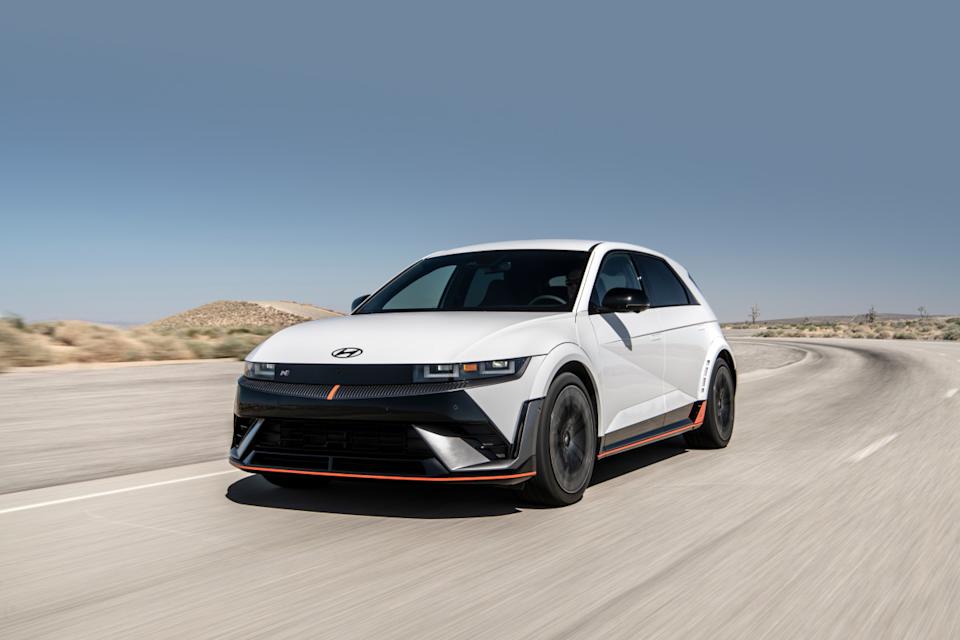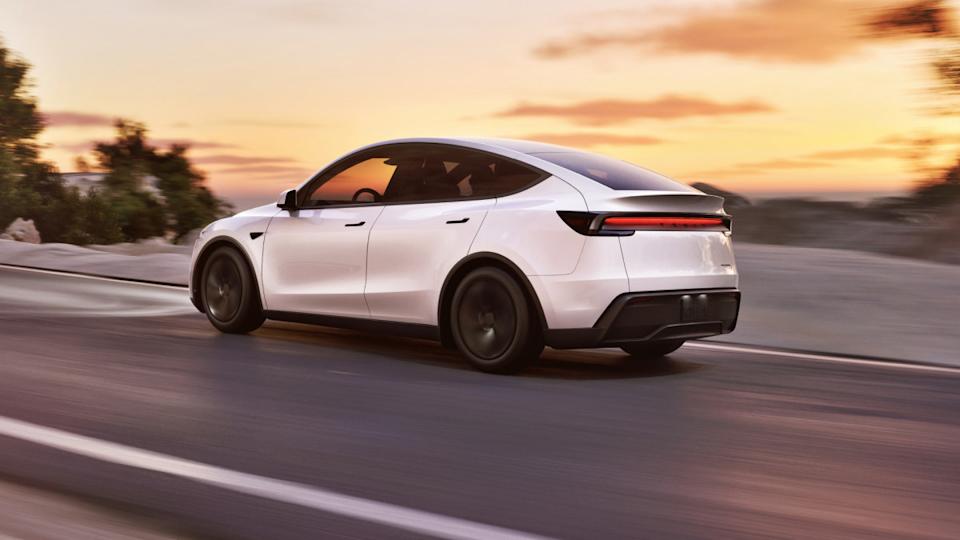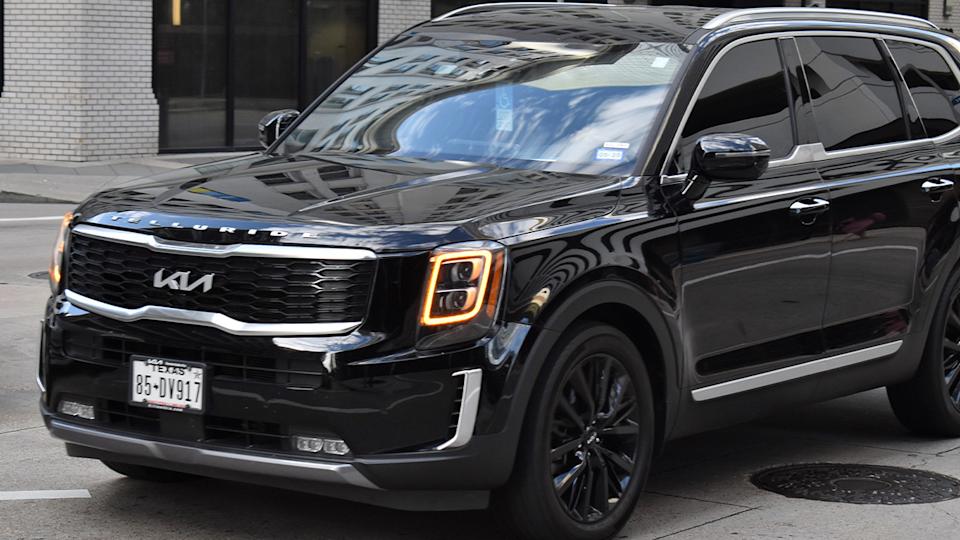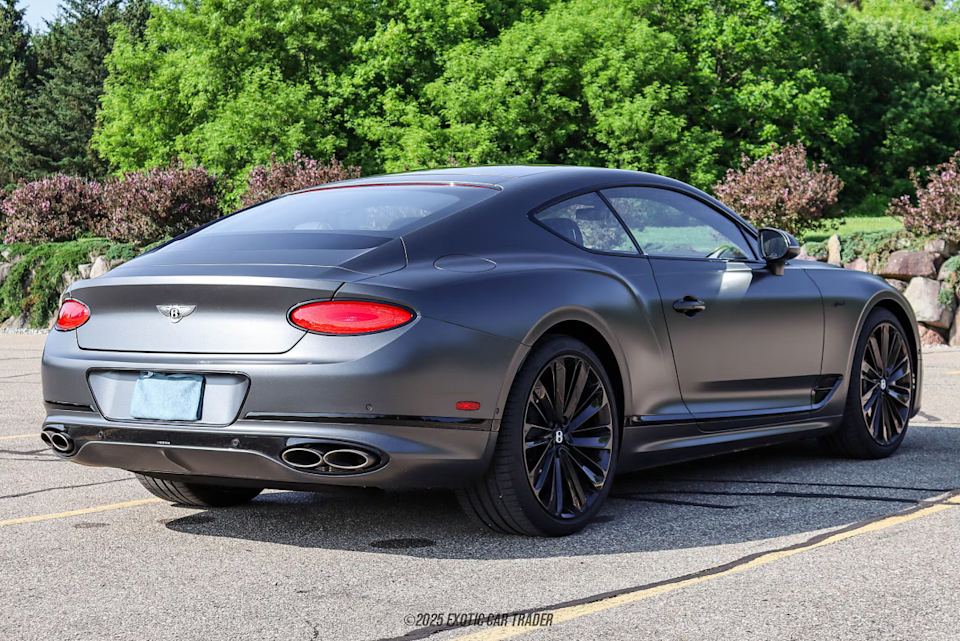2025 Tesla Model Y vs. 2025 Hyundai IONIQ 5: 5 Key Differences originally appeared on Autoblog.
Battle of the electric SUV leaders
The compact electric SUV segment has quickly become one of the most competitive areas in the automotive world, and two names dominate the conversation: the Tesla Model Y and the Hyundai IONIQ 5. Both models have helped define what mainstream electric crossovers should look like. Tesla’s entry has been the world’s best-selling EV for several years running, while Hyundai’s IONIQ 5 has built a reputation as one of the most well-rounded and user-friendly electric SUVs on the market.
For the 2025 model year, both vehicles remain compelling, but they cater to slightly different buyers. Tesla leans heavily into its software ecosystem, range, and minimalist design, while Hyundai focuses on charging speed, comfort, and practicality. Here are the five biggest differences between the Tesla Model Y and the Hyundai IONIQ 5.
1. Range and charging performance
One of the first questions EV shoppers ask is how far they can go on a charge, and in this respect, the Tesla Model Y holds a slight edge. The Long Range all-wheel-drive version offers an EPA-estimated 327 miles of range, with real-world figures typically coming in close to that number. Charging speeds are capped at about 250 kilowatts on Tesla’s Supercharger network, which translates to around 169 miles of range gained in just 15 minutes.

The Hyundai IONIQ 5 does not reach the same maximum range on paper, though it comes surprisingly close. Depending on trim and drivetrain, its EPA ratings span from 245 to 318 miles, and independent testing has shown the dual-motor Limited trim exceeding its official estimate, reaching 282 miles in the real world. Where Hyundai really shines is in charging. Thanks to its 800-volt electrical architecture, the IONIQ 5 can accept up to 350 kilowatts, adding as much as 178 miles of range in 15 minutes and reaching 80 percent charge in about 18 minutes under ideal conditions.
The end result is a tradeoff: Tesla offers the longest single-charge driving distance, while Hyundai provides some of the fastest recharging times in the industry.
2. Interior design and technology
Tesla and Hyundai take very different approaches to the cabin experience. The Model Y follows the brand’s trademark minimalist style, dominated by a 15.4-inch central touchscreen that controls nearly every function in the vehicle. Physical buttons are almost entirely absent, and even the instrument cluster has been folded into the main display. Standard equipment includes dual wireless charging pads, a 16-speaker audio system, and access to Tesla’s unique software ecosystem, which brings constant over-the-air updates and, for an extra cost, the brand’s Full Self-Driving (Supervised) suite.

2025 Hyundai IONIQ 5
HyundaiView the 2 images of this gallery on the original article
The Hyundai IONIQ 5, on the other hand, blends futuristic design with practicality. Its cockpit features two 12.3-inch displays—one for the gauge cluster and one for infotainment—along with physical climate controls and a mix of touch and button-based inputs. Unlike Tesla, Hyundai supports both Apple CarPlay and Android Auto, which remain key conveniences for many drivers. Higher trims add a surround-view camera, a head-up display, and vehicle-to-load capability, which allows the car’s battery to power external devices or even a small campsite.
While Tesla’s cabin feels cutting-edge in its simplicity, Hyundai earns points for usability and features that are more familiar to most drivers. The two philosophies highlight the brands’ different priorities: Tesla wants to streamline the driving experience into its software, while Hyundai aims to balance tech with everyday convenience.
3. Cargo and utility space
Utility is another area where the two EVs diverge. The Tesla Model Y stands out with its generous storage capacity, offering 29 cubic feet of space behind the rear seats and a substantial 71.4 cubic feet when the second row is folded flat. On top of that, Tesla provides a 4.1-cubic-foot front trunk, which is large enough for grocery bags or small luggage.

2025 Hyundai IONIQ 5
HyundaiView the 2 images of this gallery on the original article
The Hyundai IONIQ 5 is no slouch, but its cargo figures are more modest. Behind the second row, there is 26.3 cubic feet of space, and folding the rear seats expands it to 58.5 cubic feet. The frunk, meanwhile, is quite small and designed mostly to store the charging cable. While the IONIQ 5’s cabin feels spacious and airy thanks to its flat floor and sliding center console, Tesla ultimately offers more raw volume for families who regularly haul gear.
The Model Y also has an optional third-row seat in some configurations, though it remains more of an emergency-use solution than a true seven-passenger setup. Still, the added flexibility underlines Tesla’s utility advantage over Hyundai.
4. Pricing, value, and incentives
Pricing plays a critical role in the EV buying decision, especially as federal and state incentives come into play. For 2025, the Tesla Model Y Long Range AWD starts at $50,630, while the rear-wheel-drive Long Range version is priced at $46,630. Depending on configuration, the Model Y may qualify for up to $7,500 in federal tax credits.

The Hyundai IONIQ 5 comes in at a slightly lower starting point, with prices beginning around $44,200. It also qualifies for the same federal credits in certain trims, which can bring its effective cost below that of the Model Y. Beyond sticker price, Hyundai adds value with its warranty coverage. Buyers receive a five-year, 60,000-mile basic warranty and a 10-year, 100,000-mile powertrain warranty, compared with Tesla’s four-year, 50,000-mile basic coverage and eight-year, 120,000-mile limited battery warranty.
When looking purely at upfront cost and long-term warranty, the IONIQ 5 comes out ahead. Tesla, however, balances the scale with its more extensive standard equipment list and software-driven features that continue to evolve long after purchase.
5. Ride comfort, styling, and driving feel
Finally, there is the question of how these vehicles actually drive and feel on the road. The Hyundai IONIQ 5 has earned praise for its smooth ride, quiet cabin, and comfortable suspension tuning. It favors a relaxed, family-friendly demeanor over outright sportiness. The styling follows a retro-futuristic theme, with pixel-inspired lighting and sharp lines that make it one of the more distinctive EVs on the market. Inside, the flat floor and adjustable center console further emphasize spaciousness and comfort.

The Tesla Model Y, by contrast, feels more athletic. Acceleration is brisk, with the Long Range AWD model reaching 60 miles per hour in just over four seconds. Steering is sharper, and the vehicle’s stance makes it feel closer to a performance crossover than a family hauler. The tradeoff comes in ride comfort, where some drivers have noted that the suspension can feel firm and the steeply raked rear hatch compromises visibility.
Both approaches will appeal to different buyers. Tesla caters to those who want speed and sporty handling from their EV, while Hyundai’s IONIQ 5 is better suited for drivers who prioritize comfort and a relaxed daily commute.
Final thoughts
The Tesla Model Y and Hyundai IONIQ 5 are two of the strongest choices in the compact electric SUV market, but they excel in different areas. Tesla continues to lead in maximum driving range, cargo versatility, and access to its unmatched Supercharger network. Hyundai counters with faster charging, lower pricing, a longer warranty, and a more comfortable ride.

2025 Hyundai IONIQ 5
HyundaiView the 2 images of this gallery on the original article
Ultimately, the decision comes down to priorities. Shoppers who want the longest range possible, cutting-edge software, and extra cargo flexibility will find the Model Y hard to beat. Those who prefer a balance of comfort, user-friendly tech, and overall value will see the IONIQ 5 as a better fit. Both vehicles represent the direction the industry is heading, and both make a strong case for being the EV to park in your driveway in 2025.
2025 Tesla Model Y vs. 2025 Hyundai IONIQ 5: 5 Key Differences first appeared on Autoblog on Aug 3, 2025
This story was originally reported by Autoblog on Aug 3, 2025, where it first appeared.








Comments